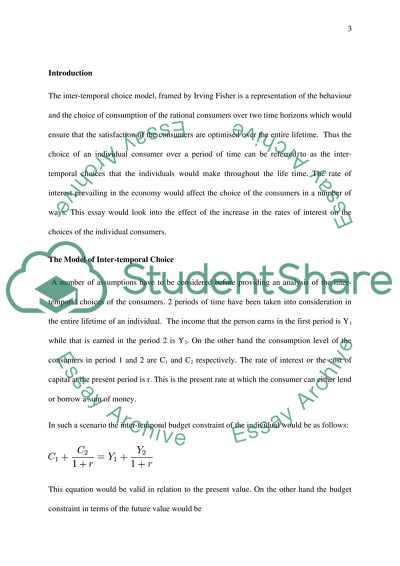Cite this document
(“Using a two-period model of inter temporal consumer choice explain the Essay”, n.d.)
Using a two-period model of inter temporal consumer choice explain the Essay. Retrieved from https://studentshare.org/macro-microeconomics/1627099-using-a-two-period-model-of-inter-temporal-consumer-choice-explain-the-effects-of-an-increase-in-the-interest-rate-on-the-level-of-consumption-in-each-period-and-on-whether-the-consumer-has-become-better-off-when-the-consumer-is-a-a-borrower-in-th
Using a two-period model of inter temporal consumer choice explain the Essay. Retrieved from https://studentshare.org/macro-microeconomics/1627099-using-a-two-period-model-of-inter-temporal-consumer-choice-explain-the-effects-of-an-increase-in-the-interest-rate-on-the-level-of-consumption-in-each-period-and-on-whether-the-consumer-has-become-better-off-when-the-consumer-is-a-a-borrower-in-th
(Using a Two-Period Model of Inter Temporal Consumer Choice Explain the Essay)
Using a Two-Period Model of Inter Temporal Consumer Choice Explain the Essay. https://studentshare.org/macro-microeconomics/1627099-using-a-two-period-model-of-inter-temporal-consumer-choice-explain-the-effects-of-an-increase-in-the-interest-rate-on-the-level-of-consumption-in-each-period-and-on-whether-the-consumer-has-become-better-off-when-the-consumer-is-a-a-borrower-in-th.
Using a Two-Period Model of Inter Temporal Consumer Choice Explain the Essay. https://studentshare.org/macro-microeconomics/1627099-using-a-two-period-model-of-inter-temporal-consumer-choice-explain-the-effects-of-an-increase-in-the-interest-rate-on-the-level-of-consumption-in-each-period-and-on-whether-the-consumer-has-become-better-off-when-the-consumer-is-a-a-borrower-in-th.
“Using a Two-Period Model of Inter Temporal Consumer Choice Explain the Essay”, n.d. https://studentshare.org/macro-microeconomics/1627099-using-a-two-period-model-of-inter-temporal-consumer-choice-explain-the-effects-of-an-increase-in-the-interest-rate-on-the-level-of-consumption-in-each-period-and-on-whether-the-consumer-has-become-better-off-when-the-consumer-is-a-a-borrower-in-th.


